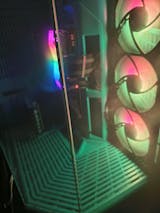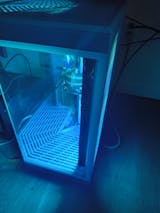Most PC enthusiasts know that the motherboard is essentially the “backbone” of a computer, but few people realize how important a role voltage plays in the overall performance of your PC. One of the most important parts of a PC’s motherboard is the voltage regulator module (VRM). These modules supply clean and stable voltage to the CPU and other components. When your PC starts crashing, resetting, and settling on the dreaded Blue Screen of Death, that’s a sign that your VRM is in need of attention. In this guide, we explain motherboard VRMs and provide tips to help you avoid fluctuations or noise on the voltage they supply.
What is Motherboard VRM?
The voltage regulator module (VRM) of a motherboard, also known as the processor power module, is a step-down power converter that supplies the appropriate amount of voltage to a computer’s microprocessor. This inverter allows processors with varying amounts of supply voltage to be mounted on the same motherboard. VRMs are also valuable to memories, chipsets, and other circuits. When you’re debating whether to ditch your old motherboard or spend time getting it up-to-date, inspecting the VRM is a great way to determine a motherboard’s overall quality and lifespan.
With a quality voltage regulator circuit, you can expect a stable system that will last for years. You can recognize this circuit easily because it is the only circuit on the motherboard of your PC that uses chokes, or a kind of insulated wire that suppresses frequency. VRMs are usually located near the CPU socket of a motherboard, but they are also found in the choke spread near the memory sockets.
Guide to VRM Components
Most motherboards consist of the same components, but motherboards made by certain manufacturers might have passive heatsinks or use integrated circuits in lieu of transistors. Confirm the make and model of your motherboard before diving into identifying VRM components. Here are some of the components that make up the VRM.
Capacitors: Most motherboards are equipped with leak-resistant capacitors, which are responsible for containing power. As a capacitor ages, you may notice decay or the inability to retain power.
Chokes: There are two types of insulated wires that serve as filtering inductors for your VRM. Chokes improve power efficiency and a motherboard’s ability to step down power when overvolting or overclocking. Ferrite chokes use less power, resist rust, and have a lower electromagnetic interference (EMI) compared to iron chokes.
MOSFET Driver: A Metal-Oxide Semiconductor Field Effect Transistor (MOSFET) driver is a small integrated circuit that’s the power device or the muscles of your VRM. A VRM circuit uses one of these power-switching elements per channel. A MOSFET driver is one of the most common transistor types in electronics. MOSFETs are highly efficient, making them ideal for high-power loads.
Phase: The combination a power device and a filtering device that equalizes the output current from the transistors.
PWM Controller: Every motherboard has one pulse-width modulation (PWM) controller per voltage level required by the CPU, memories, chipset, and more. A PWM controller controls each voltage output, and most controllers are able to control two independent voltage levels. When a PWM circuit runs at higher frequencies, you can reduce power loss and increase the efficiency of your motherboard.
Undersized VRMs can lead to the malfunction of a graphics card if the delivered current is too high. Many of the latest graphics cards come with advanced over-current protection (OCP), in which the graphics processor is throttled back to reduce the amount of current the voltage regulator module must deliver. In other graphics cards, OCP may lead to a system reboot or destroy your graphics card altogether. If you decide to poke around in your motherboard, proceed with caution.













